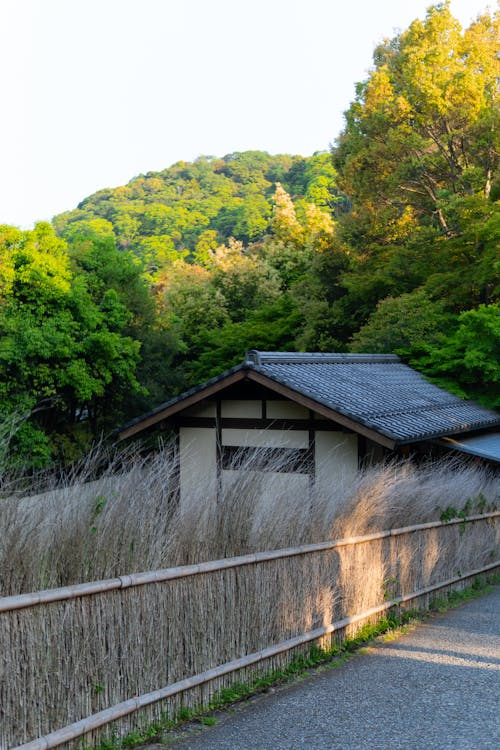
A gambrel roof is one of the most recognizable and historically significant roof styles, often admired for its aesthetic appeal and practical advantages. With roots tracing back centuries, this roof design continues to be used in barns, houses, and modern architectural projects. Its steep slopes and symmetrical shape not only improve space efficiency but also offer durability against varying weather conditions. In this article, we’ll explore the history, structure, benefits, and modern uses of the gambrel roof to understand why it remains a popular choice in the world of architecture and construction.
The Historical Origins of the Gambrel Roof
The gambrel roof design dates back to medieval Europe but became especially prominent in colonial America. It was widely used in Dutch Colonial architecture, where its distinctive two-sided slopes were both decorative and functional. This roof style became a symbol of rustic charm, often seen on barns and country houses.
The appeal of the gambrel roof lay not only in its timeless look but also in its ability to maximize usable space beneath the roof. Early settlers appreciated how the design allowed for larger upper floors without significantly increasing construction costs. This made it especially useful for barns, where spacious lofts were necessary for storing hay and equipment.
Key Features of the Gambrel Roof
A gambrel roof is easily identified by its two-sided design, each side having two different slopes. The upper slope is shallow, while the lower slope is much steeper. This combination creates impressive headroom and interior space compared to a simple gable roof. Some of its defining features include:
-
Dual-sloped sides: The striking contrast between the shallow and steep slopes makes the design functional and attractive.
-
Enhanced space: Provides more vertical room inside attics or upper floors, often converted into lofts or bedrooms.
-
Aesthetic balance: The symmetrical shape adds a visually pleasing balance to both residential and agricultural buildings.
-
Versatility: Can be used for various building types, from barns to modern family homes.
This structural balance is what makes the gambrel roof not only practical but also a lasting architectural element.
Advantages of the Gambrel Roof
There are many reasons this roof style has endured the test of time. Some of its major advantages include:
-
Maximized space: One of the biggest benefits is the spacious interior, allowing for larger second floors or storage areas.
-
Cost-effective construction: Compared to more complex roofing systems, the gambrel roof requires fewer materials, making it budget-friendly.
-
Efficient drainage: Thanks to its steep slopes, rain and snow slide off more easily, reducing the risk of water damage.
-
Timeless aesthetics: The traditional yet elegant look of the roof fits well in rural settings and blends smoothly into modern architectural designs.
For these reasons, it is often chosen for both functionality and beauty.
Common Uses of Gambrel Roofs
Historically, the gambrel roof was predominantly seen on barns in America, where the extra loft space was invaluable for farmers. However, its application has since evolved to include homes, sheds, and even commercial buildings. Here are some of its common uses:
-
Barns and agricultural buildings: Useful for haylofts, equipment storage, and maximizing space without extra cost.
-
Residential houses: Adds sophistication to colonial and modern home designs while providing roomy attics or living spaces.
-
Sheds and garages: Offers extra storage while maintaining a simple design.
-
Commercial buildings: Provides unique architectural flair while retaining functional benefits.
Its adaptability across different types of structures makes it an enduring and practical roofing choice.
Disadvantages and Considerations
While the gambrel roof has many advantages, it does have some limitations:
-
Vulnerability to wind: The wide, flat face of the roof can make it prone to wind damage in regions with extreme storms.
-
Maintenance needs: The joints and angles require careful maintenance to prevent leaks.
-
Regional suitability: Best suited for areas with moderate climates, as heavy wind or hurricanes may pose challenges.
Understanding these potential drawbacks helps builders and homeowners decide if this design is right for their project.
Modern Applications and Variations
Today, architects often integrate gambrel roofs into creative home designs that blend historical aesthetics with modern materials. Metal roofing, composite shingles, and advanced waterproofing techniques have made the design sturdier and more durable. Additionally, some modern builders modify the steepness or add dormer windows to customize the look and add more natural lighting inside.
The result is a combination of classic charm and contemporary function. Homeowners often choose this roof design for its nostalgic yet timeless character, proving that centuries-old architecture can still serve today’s needs.
Conclusion
The gambrel roof is more than just a historical architectural element; it is a design that combines practicality, space efficiency, and elegance. From its colonial origins to its presence in modern homes and barns, this roof continues to inspire architects and builders. Its ability to maximize space, offer cost-effective construction, and provide a timeless look makes it a celebrated design in both rural and urban settings. For anyone considering roofing options, the gambrel roof represents durability, tradition, and beauty woven into one enduring architectural form.
Would you like me to also optimize this article with meta description and SEO-friendly keywords for bestseoarticle.com?



